This article has links to products that we may make commission from.
Canada is a magnificent country filled with impeccably preserved vistas made up of gargantuan mountains and vibrant pine trees. Taking a Candadian road trip through this scenery is by far the most popular and appropriate way to savor its beauties.
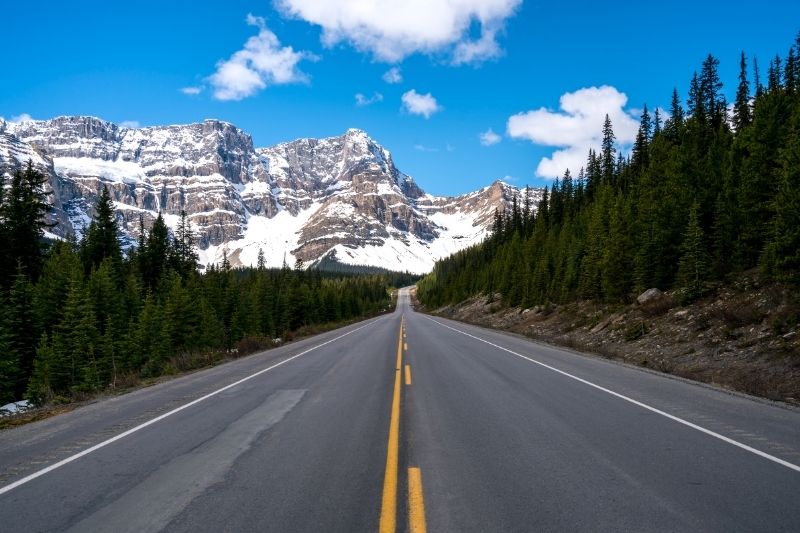
If you are a newcomer to this expansive country of deep lakes, tall peaks, and endless plains, and you have enough time on your hands to go on a long road trip, we have all the tips you need for a self-drive tour in Canada.
Canadian highways are superb, with excellent, well-maintained, surfaces offering uncongested travel to most parts of the country; roads here certainly rival those of the USA. It’s not unusual to travel for hours and not pass another vehicle in some of the more remote areas.
Benefits of a Canada Self-Drive Tour
The biggest perk of a self-drive road trip in Canada is flexibility. You decide every beat on this journey, which also means you’ll have enough elbow room to make on-the-road decisions.
Since Canadian cities are brimming with architectural marvels, views for days, and five-star restaurants, having the flexibility to spend more or less time in a given spot is going to greatly enhance your trip.
Canada is one of the best countries for self-driving tours because it has an excellent road network and incredibly helpful people around every corner. If you are ever in need of services, Canadian car experts and medical professionals are among the most mild-mannered and patient people in the world.
This means that rental cars are not only a feasible option, but a desirable one, since the state of these vehicles is universally top-notch.
Quick. Check these necessities off your prep list!
- Travel insurance: Roam Right has reliable coverage at a reasonable price. You can search for the insurance you need on their website, and filing claims is easy.
- The right luggage can make or break your trip. These hard-sided suitcases come in 2 sizes, with spinner wheels and TSA-approved lock.
- Renting a car? The Rentalcars.com app lets you search and compare offers. Don’t forget to check if you need an International Drivers License.
Canada is renowned for its highways. Highways mainly consist of two-to three-lane roads, narrowing to a wide, single lane in the countryside. The Trans-Canada Highway covers 5,000 miles, making it the longest highway in the world; while the Yellowhead Highway (Highway 16), which runs through Canada’s vast prairies, over the Rockies, and to the Pacific coast, is almost as long.
Build a Canada Road Trip Itinerary
Keep in mind that the Canadian “outback” is enormous and distances can be deceiving. It’s best to begin your road trip with a solid itinerary, to get the most out of the experience without losing any time.
Unless you have many months to spend, you’ll need to choose a road trip destination or two in Canada and stick to those routes. Some of these are shorter, but there is always a longer drive to be had just by extending the route.
You can either arrive in your own car, which will likely add many days and miles to your route, or you can head to the nearest big city via public transportation or flying, and then rent a car for the drive, which is my preferred way to do it.
Popular Road Trips Routes in Canada
Nanaimo to Tofino, British Columbia
Rugged coastline and old growth forests – (128 miles)
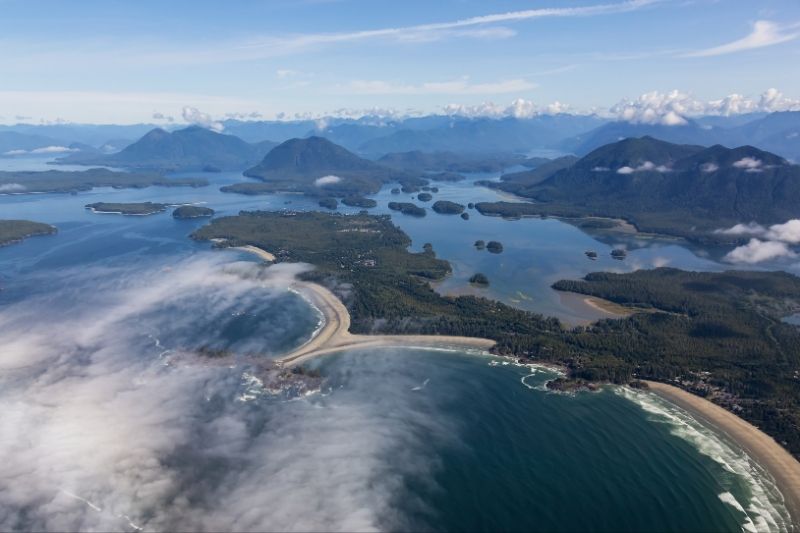
Located on Vancouver Island in British Columbia, this route is 207 km (128 miles) long. It takes roughly 3 hours to drive, though you’ll want to give yourself a few extra hours to really take it all in, because there is a lot of natural beauty to soak up.
The journey starts in Nanaimo, which you can reach by ferry from Vancouver, unless you’re planning to drive the entire route around Vancouver Island, which is a great road trip itself (though much longer).
Head to Vancouver’s Horseshoe Bay terminal and catch the ferry to Nanaimo’s Departure Bay. Here’s the schedule. It takes 1 hour 45 minutes. Car & driver costs from $49, depending how you book it.
Along the route, make sure to stop and see these highlights:
- Coombs: Visit the Old Country Market
- Cathedral Grove in MacMillon Provincial Park: the biggest Douglas Fir trees on earth that you can see from all kinds of walking paths
- Port Alberni: great place to explore on foot, kayak, or boat
- Pacific Rim Highway: views like in the image above, absolutely stunning
- Wally Creek: Must see views and great photo-taking spot
- Ucluelet: Fun little town with shops, beaches, and restaurants
- Tofino: Final stop, don’t miss the beaches
Sea to Sky Highway
Dramatic coastal drive and rainforests – 95 miles
The Sea to Sky Highway is one of those dramatic and beautiful drives that winds all along the coast line, hugging the trees, and yet so close to the water that you’ll be absolutely amazed.
The first time I drove this route was in the dark, late at night, and I saw nothing but dark road ahead. In the morning, when I drove along the route again I was shocked by the beauty.
Needless to say, give yourself lots of time to drive this 95-mile route from Vancouver to Pemberton, British Columbia, because the road is windy and you’ll want to stop off at overlooks along the way.
The drive starts in Vancouver and heads north toward Pemberton and Whistler. You’ll wind along the shore of Howe Sound at sea level, then climb up into the Coast Mountains and into old-growth rainforest, on the way to Whistler and beyond.
Along the way, be sure to see:
- Vancouver city and surrounds
- Horseshoe Bay in West Vancouver
- Britannia Beach and the Britannia Mine Museum
- Shannon Falls: the third-highest waterfall in British Columbia
- Squamish – small town that’s a good launching point for hikes around the area and a good place to stay overnight, if you’re making this a 2-day drive.
- Whistler: see all the amazing things to do in Whistler in summer
Banff National Park to Jasper National Park, Alberta
Mountain ranges like you’ve never seen before – 180 miles
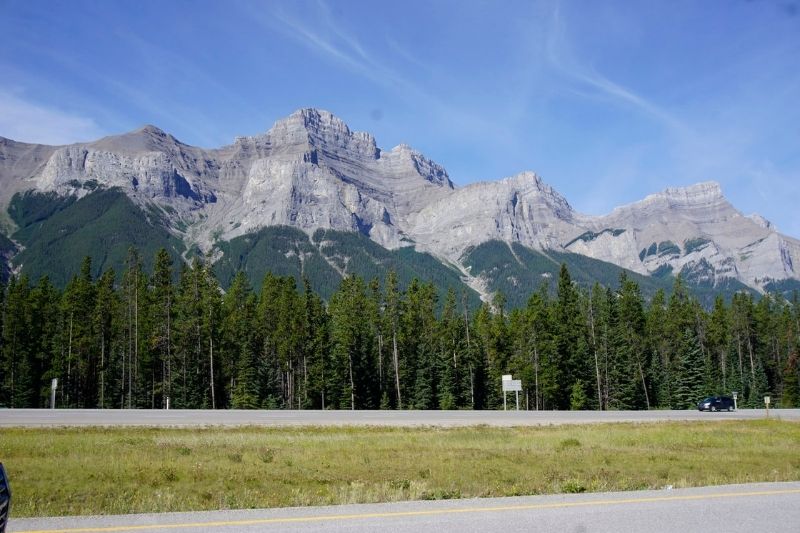
The drive between Banff National Park and Jasper National Park is one of the most-driven road trips in Canada. These being two of the most popular national parks, and located just 4 hours apart from each other.
You’ll take the AB-93 North from Banff, driving through Lake Louise, on the Icefields Parkway, on to Jasper National Park in 180 miles. What you’ll see along the way is a towering mountain range, jagged snowy peaks (even in summer), and numerous glaciers. It’s absolutely breathtaking.
Though the route is just 4 hours, with minimal stops, you’ll definitely want to plan for a full day, or even 2-3. With Lake Louise along the way, as well as Morraine Lake and Lake Peyto, you’ll need time to stop at all of those, and though the distance between is small, there is often a lot of traffic, parking congestion, and on small roads. It can take a full day just to see all 3 lakes.
For this trip, it’s typical to spend a few days in the Banff area, then do the drive and stay another few days in the Jasper National Park area.
Stops to make along the way:
- Lake Louise
- Lake Morraine
- Lake Peyto
- Crowfoot Glacier
- Bow Lake
- Columbia Icefields
- Weeping Wall
- Athabasca Falls
Montréal to the Peninsule de la Gaspesie, Québec
One of the most beautiful scenic roads – 560 miles
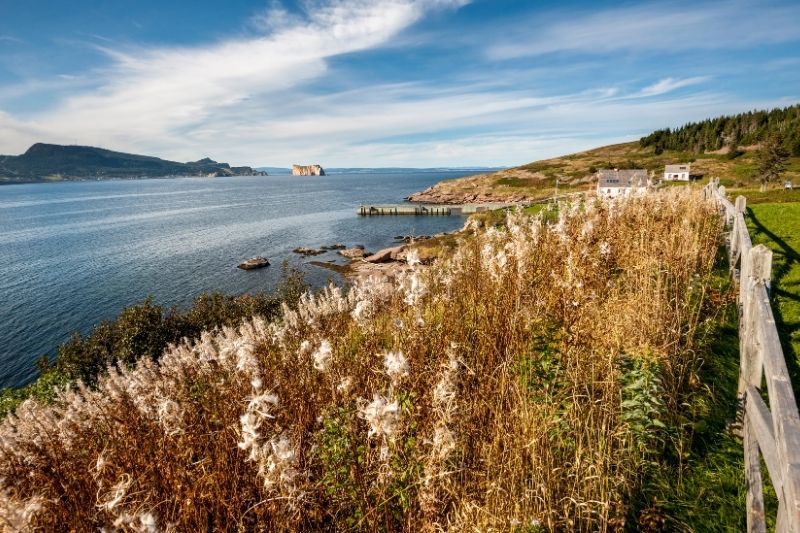
From Montréal, you can drive about 560 miles to the northeast, along the Gaspé Peninsula, leading toward Gaspé, Quebec, at the tip of the peninsula. It can be done in a loop, if you’re up for the trek.
You’ll start out in the city and since this is one of Canada’s liveliest and most food-centric cities, you’ll want to spend a few days exploring there first, before driving onward.
What to see along the way:
- St. Lawrence River: beautiful area with quaint villages and to-die-for sunsets
- Bic National Park: Picturesque coastal walks
- Baie-des-Chaleurs: Great area for water sports and warm water
- Take a cruise to Bonaventure Island
- Gaspe is home to Forillon National Park and the Parc national de la Gaspésie in the interior.
The Cabot Trail, Cape Breton Island, Nova Scotia
Inspiring views and natural landscape – 186 miles
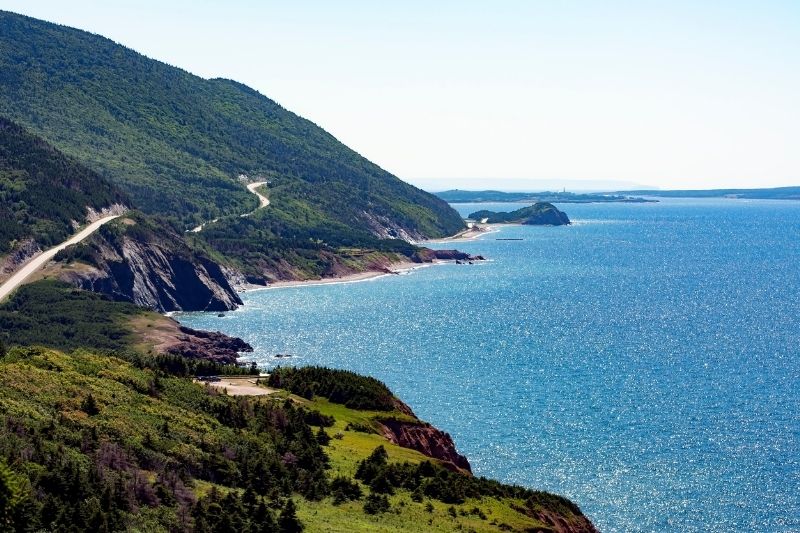
Located on Cape Breton Island in Nova Scotia, the Cabot Trail offers road-trippers some of the best views along Canada’s Atlantic Coast.
This 186-mile journey weaves through The Cape Breton Highlands National Park with breath-taking coastal views the whole way. The adventure on this road trip is the Island itself. There are many trails, hikes, views, shops, restaurants… all kinds of things to discover.
You can drive the route either direction, counter-clockwise or clockwise. There’s no right or wrong way to do it. You can start in Englishtown, especially good if you take the Englishtown Ferry to get there, and then just take off in whatever direction you like.
What to see along the way:
- Black Brook Beach near Ingonish – there’s a waterfall and short hiking trail.
- Ingonish Beach
- Big Spruce Brewing in Nyanza
- Whale Interpretive Centre in Pleasant Bay
- Skyline Trail and Franey Trail in the Cape Breton Highlands National Park.
- Chéticamp
- Highlands Links Golf Resort
Preparation Basics
With a solid itinerary in the bag, you’ll have to think about several basic but crucial things before you embark on this road trip.
- First of all, you will need to make sure your insurance (car and health) covers every conceivable circumstance while you drive through the enormous Canadian wild.
- You’ll need to have an international drivers license, if your home license is not written in English. US drivers need not worry about this. Don’t forget to pack your drivers license (we’ve actually done this before)
- Make sure you have a GPS and know where you’re going and how long it will take to get there.
As long as you are familiar with English, you should be golden in most of Canada. However, it would be good if you familiarize yourself with certain French words and phrases if your self-drive road trip cuts through Quebec.
Thankfully, most of the residents of Quebec are bilingual, so communication shouldn’t be a problem, but you’ll run into difficulties while reading traffic signs – since most of them are in French. This is why, above all else, you should try to familiarize yourself with the most frequent French words and phrases used in traffic.
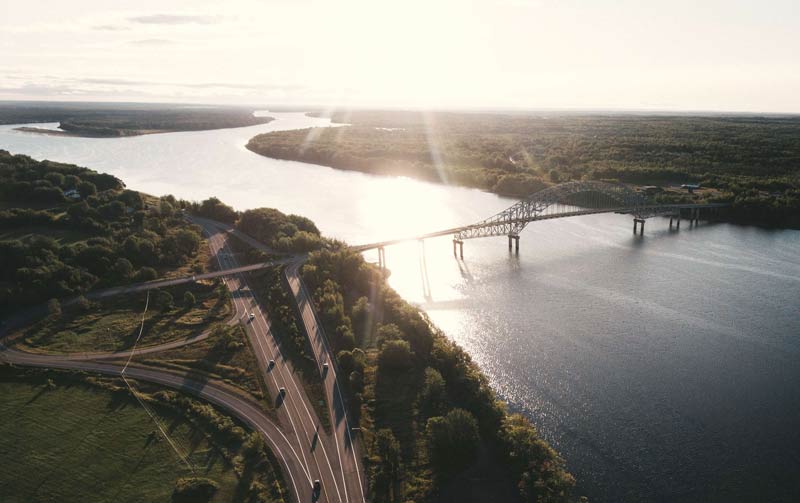
Stock Up on Snacks
In order to cover greater distances and not have to stop frequently, stock up on healthy snacks and nutritious food that will last you throughout the trip. This means you’ll probably have to sacrifice the types of foods that cannot sit in storage for longer than 48 hours, but it’s well worth it.
Since vast Canadian geography and winding roads offer so many beautiful sites and hidden natural treasures, you’ll want to be as independent and self-sufficient as possible so you can explore to your heart’s content. In this regard – water is freedom, and as long as you keep water with you at all times, you’ll be fine.
Make sure plastic water bottles are not exposed to sun or smoldering car interior temperatures. And always take water with you on hikes.
More on Canada
CONCLUSION
Above all else, driving through Canada is a relaxing, almost meditative experience. The air quality of the northern territories is indisputable, and you are bound to return from this field trip with a boosted immunity and revitalized spirit.
Just make sure that, before you embark on this journey, you have everything a person needs to keep the entire trip safe and comfortable. It is bound to be a memorable experience no matter what.
Like this post? Why not save it to Pinterest?
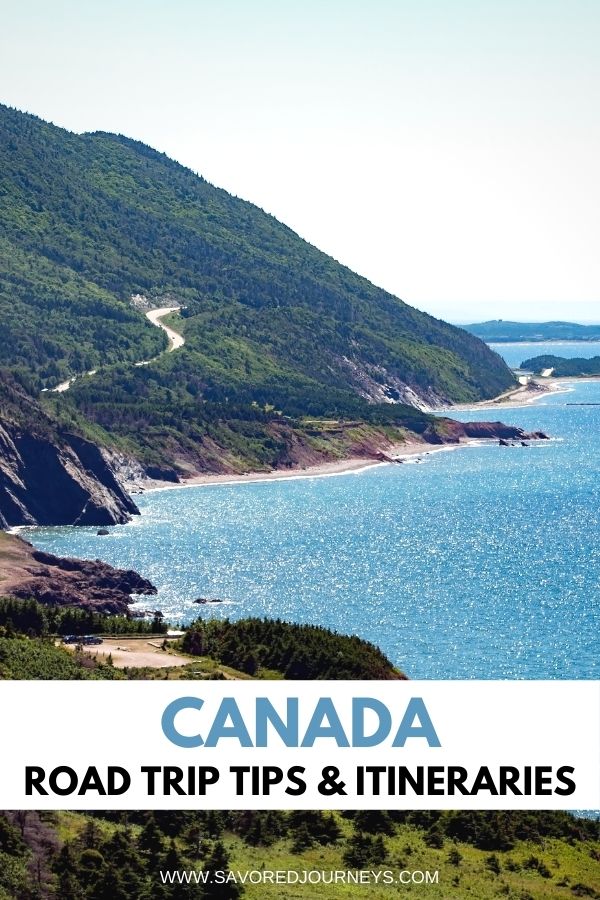
Canada Road Trip Tips & Itineraries




